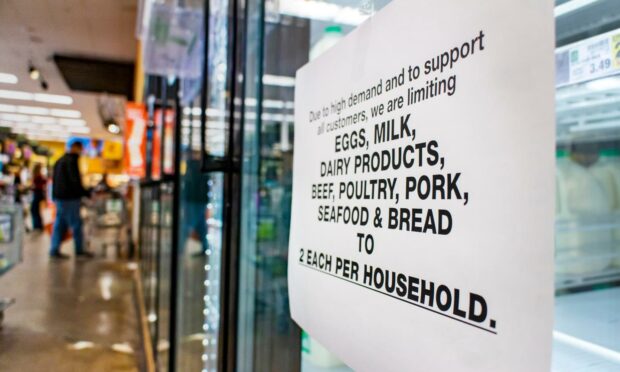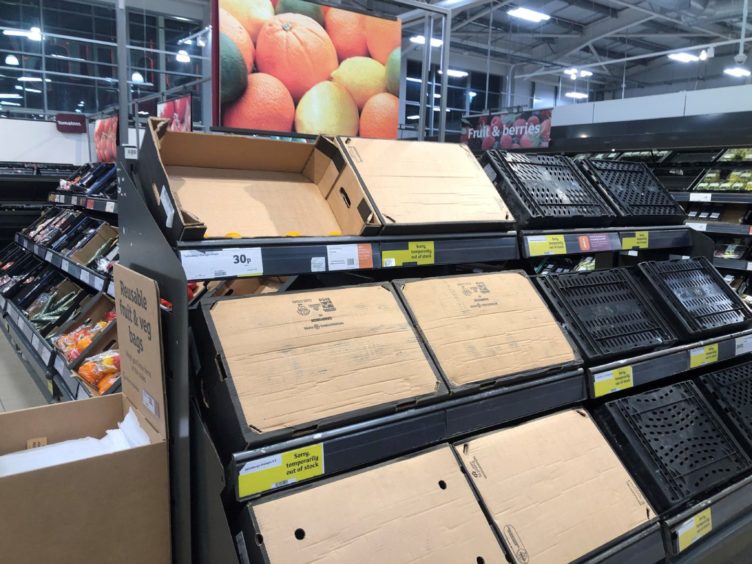If shortages cause inflation to hit 10%, it might cost 4% of GDP (gross domestic product) to get it back down again.
Some readers will remember the shortages of the early 1970s, and specifically 1973 and 1974.
My parents were furnishing a newly built house overlooking the first fairway of the Muirfield golf course in December 1973, and I vividly remember them having to get the furniture made in Malaysia and then shipped to the UK to enable us to have it in time for Christmas.
During 1973 it was hard to find many products that could be bought off the shelf, and delays could last anywhere from a few weeks up to several years.
The worldwide recession caused by the first oil shock when the price per barrel shot up from $3 to $14 removed shortages of the commodity, but an interim effect was rising inflation.
Strike threat lifted at Speyside distilleries as whisky workers agree pay deal
In the UK, where trade union power was at its zenith, 12-monthly RPI (retail price index) inflation peaked at 26.9% in June 1975. In the US, inflation peaked in the mid-1970s at 12.3% but actually surpassed that in 1980 after the second oil price shock, reaching 14.8% in March 1980.
Even countries considered to have handled inflationary pressure “well’” – like Switzerland and Germany – had annual inflation of 9.8% and 7% at their peaks in the mid-1970s.
‘Eerie echoes’
There are eerie echoes of this today. Pictures abound of empty shelves, sometimes attributed to Brexit. There is a global shortage of electronic chips. Ironically, also a shortage of French fries in the US, though the two are largely unrelated.
There is a shortage of drivers of all kinds, especially of HGV drivers in the UK where Brexit is clearly part of the problem (though since we at Cebr wrote our first report on the coming HGV driver shortage over 15 years ago, Brexit can’t be the whole story).
The May data for Japanese car production showed a 19.4% fall, mainly because of semiconductor shortages. The average lead time for chips is assessed at 19-54 weeks; these items are normally available either off the shelf or within a month.
Food shortages are emerging around the world. Shipping prices have soared; the pre-pandemic cost of shipping a container from China to Ireland was 1,250 euros. It is now 8,000 euros (nearly £6,900).
Cebr has been relatively optimistic about the pace of the recovery this year in both the US and UK – and while there is still plenty of time to be proved wrong, the consensus forecast has gradually caught up with us.
But the consensus view at the beginning of the year was for quite a subdued upturn and the scale of the recovery has taken many businesses by surprise. This is probably the biggest single reason for the shortages.
Contributing to this have been a wide range of supply problems, ranging from the blockage of the Suez Canal to shut sawmills creating shortages of lumber and petrochemical plants in the Gulf of Mexico closed by winter storms.
An underlying cause is that companies have been reducing inventory and moving to just-in-time, “lean” production for more than 40 years.
Inventories were clearly excessive in the 1970s – I remember one of my fellow students doing the stocktaking for tyres in the British Leyland plant in Oxford who discovered workers had created a “cave” within the pile of tyres, and installed beds, chairs, television sets and a card table.
Minimalist approach
But I’ve always been surprised at the extent of management effort devoted to minimising inventories, when the cost of holding them has been relatively low and the damage from disruption if anything runs short is high.
The potential benefits have typically been more to do with financial engineering than productivity.
In the UK the problems, if not entirely attributable to Brexit, have almost certainly been exacerbated by it. A combination of Covid and Brexit is an important contributor to the HGV driver shortage. Pre-Brexit, Cebr estimated a shortage of about 60,000 drivers but the latest equivalent estimate suggests it is more than 100,000.
Some of the UK’s food shortages are also due either to Brexit or to post-Brexit customs regulations. And, although the exodus of foreign workers from the UK is at least partly due to Covid, it would also be hard not to attribute a sizable proportion to Brexit and the highly bureaucratic post-Brexit migration rules.
Some of the Brexit-related problems could be reduced by UK Government action – most obviously labour shortages, where bureaucratic procedures are making it much more difficult than necessary to obtain staff, as my colleague Kay Neufeld pointed out in a recent Forecasting Eye.
Silver linings
There are also two upside Brexit impacts on shortages in the UK, though these are rather smaller than the downsides. Firstly, shortages will accelerate attempts to streamline post-Brexit processes.
Secondly, products – especially food – for which exports are being frustrated post-Brexit are becoming more easily available for domestic consumption.
Most industrial experts expect the impact of shortages to grow during the rest of 2021 and hold back economic growth in 2022. It is possible they could reduce GDP growth worldwide by more than 1%.
The only answer to inflation caused by shortages is to reverse expansionary fiscal and monetary policies.”
But this is small beer compared to the impact they may have if they lead to 1970s style double-digit inflation. Empirical work suggests that if inflation is running at 10%, the cost of getting it back down to 2% is at least 4% of GDP.
Ultimately, the only answer to inflation caused by shortages is to reverse expansionary fiscal and monetary policies.
Analysis: How inflation is taking a toll on my bathroom renovation
Key change to pension Lifetime Allowance prompts early retirement of NHS workers
Governments can do more to speed up the pace of the economy returning to low inflation. In particular, they can boost competition and deregulate. They also need to be very tactical about policies that may raise prices, such as higher indirect taxes and climate change policies.
The timing of imposing restrictions to meet climate change objectives may need to be carefully aligned with macroeconomic objectives to avoid a suboptimal result.
Douglas McWilliams is deputy chairman of the Centre for Economics and Business Research.














